 |
 |
 |
| |
Protease Inhibitor Monotherapy Is Not Associated with a Higher Rate or a Different Pattern of Neurocognitive
Impairment than Triple Drug Therapy
|
| |
| |
Reported by Jules Levin
CROI 2013
I Perez-Valero1*, A Gonzalez-Baeza1, M Estebanez1, N Stella-Ascariz1, J Mingorance1, C Bayon1, M Lagarde2, F Pulido2, A Borobia1, JR Arribas1 and the PICASSO Study group.
1. Hospital Universitario La Paz, IDIPAZ, Madrid, Spain. 2. Hospital Universitario Doce de Octubre

Excerpted from.....
Complications of HIV and its treatment, Impressions from the 20th CROI - Pablo Tebas, MD University of Pennsylvania - (03/20/13)
Neurocognitive impairment
Some studies suggest that patients with HIV infection, despite virological control, have ongoing neurocognitive impairment. Although this impairment is mild, and can only be detected using sophisticated neurocognitive testing, it creates great concern among investigators in patients with HIV infection. The presence of this problem led to the hypothesis that this neurocognitive impairment could be prevented by using drugs that penetrate the central nervous system. Dr. Letendre of San Diego created a system that scored HIV drugs according to their penetration in the CNS. He postulated that treatments with better CNS scores would be better in preventing the development of neurocognitive impairment.
Two studies were presented during these meetings that were testing this hypothesis in different ways. In the first study, presented by Ron Ellis, individuals that were starting a new antiretroviral regimen were randomized to a regimen with good CNS penetration and compared to patients that were randomized to a not CNS targeted regimen (2). The study was a small (it had difficulties with enrollment and it took almost 4 years to enroll 59 patients). The selection of CNS targeted regimen did not make a difference at 16 weeks, either in sophisticated neurocognitive testing or in biological outcomes in the CSF. In fact 87% of the patients randomized to a non-CNS targeted regimen reached virological suppression in the CSF, versus 68% of those receiving a CNS targeted regimen. The main limitation of the study is that the primary endpoint was taken relatively early, only after 16 weeks of therapy, and that a more prolonged treatment might be needed to see an effect. However, I think the study clearly shows that it is probably not the case that an antiretroviral drug has to penetrate the CSF to be able to exert a beneficial effect in brain function. The second study (3), the PICASSO study, evaluated the neurocognitive evolution of participants of a trial in which patients were randomized to maintain boosted darunavir monotherapy or lopinavir/r or a combination of two nucleoside analogues with the boosted protease inhibitor. Darunavir/ritonavir & lopinavir/r do not have CNS penetration, so the hypothesis was that those patients whose treatment do not penetrate well the CSF should have some neurocognitive deterioration as a consequence. It did not happen, putting another hole in the theory that CNS penetration matters clinically. Another study showed that mega HAART did not improve the neuropsychological performance compared to stand on antiretroviral therapy in patients recently infected with HIV infection. It was really a very bad year for penetration-effectiveness scores (CPE). I think the combination these studies suggest that the most important thing to improve the neurocognitive situation of our patients is to give a fully suppressive antiretroviral regimen. It does not seem that selecting a regimen based on its ability to penetrate the brain has any additional benefit. I think it is going to be very difficult to pursue this idea in the future. If there is neurocognitive impairment associated with HIV infection in patients fully suppressed then it is going to be necessary to understand clearly the mechanism rather than targeting the HIV virus itself.
Darunavir Concentrations in Cerebrospinal Fluid
and Blood in HIV-1-Infected Individuals
http://www.natap.org/2009/HIV/072409_01.htm
Darunavir in the CSF: "Darunavir Concentrations in CSF Exceed The Median Inhibitory Concentration"
http://www.natap.org/2009/ICCAC/ICCAC_60.htm
Therapeutic Darunavir and Etravirine Concentrations in Cerebrospinal Fluid
http://www.natap.org/2011/CROI/croi_119.htm
Kaletra Independently Reduces HIV Replication in Cerebrospinal ...
www.natap.org/2005/CROI/croi_29.htm






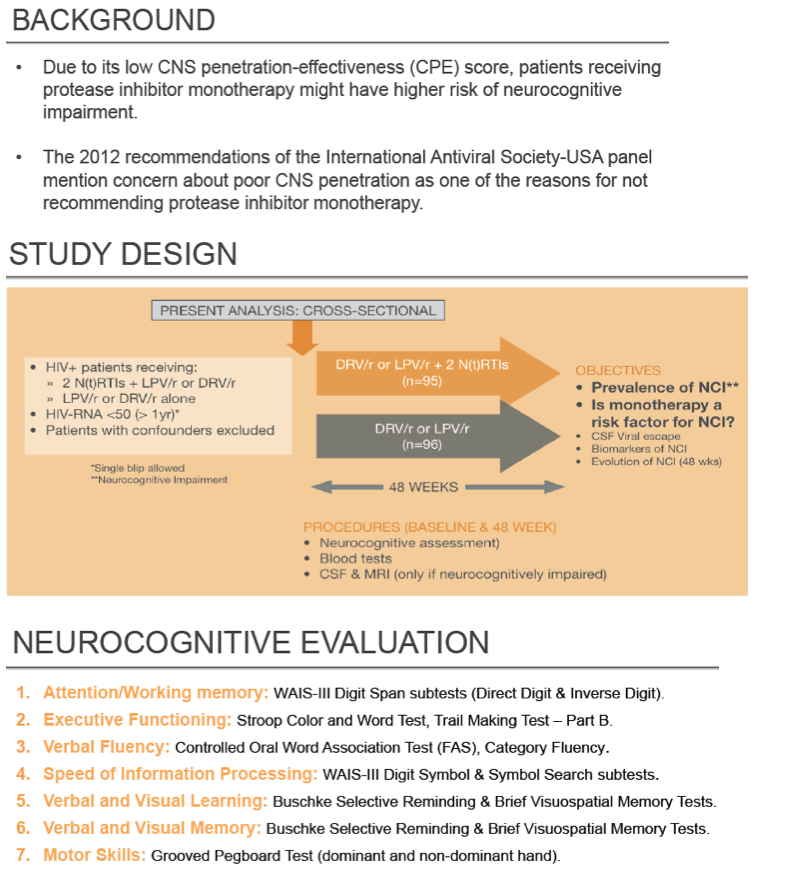
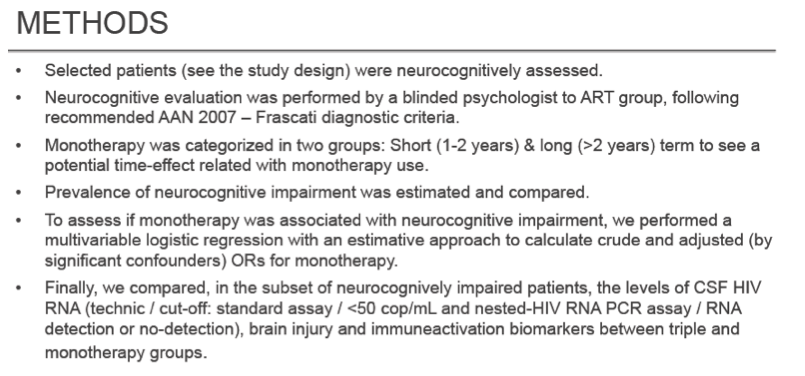
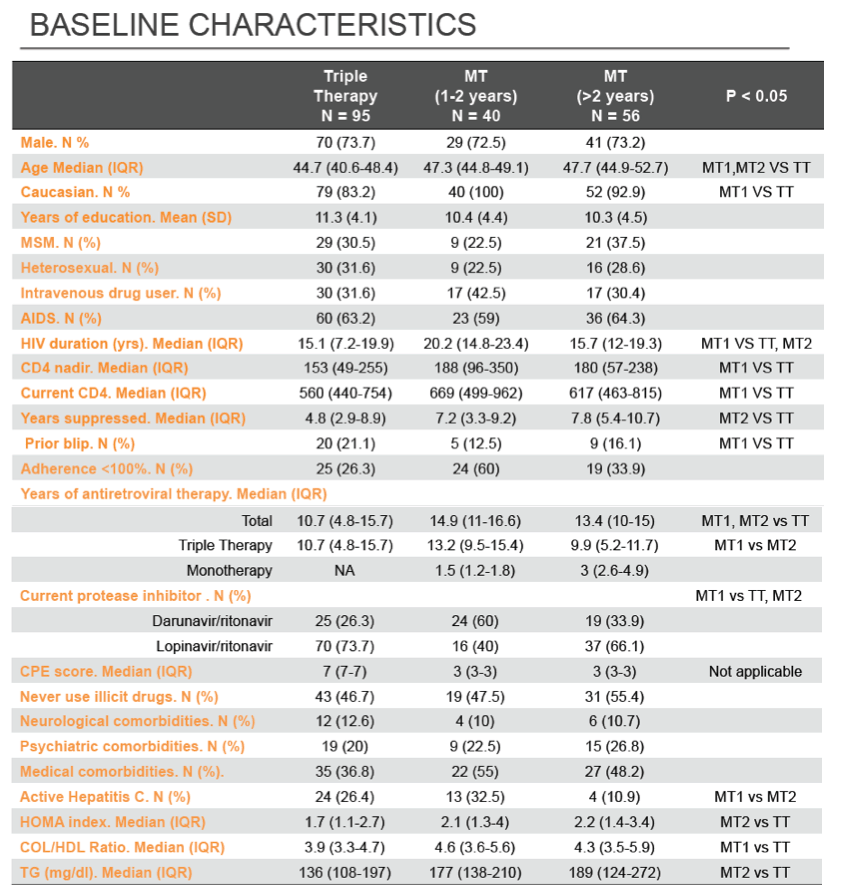
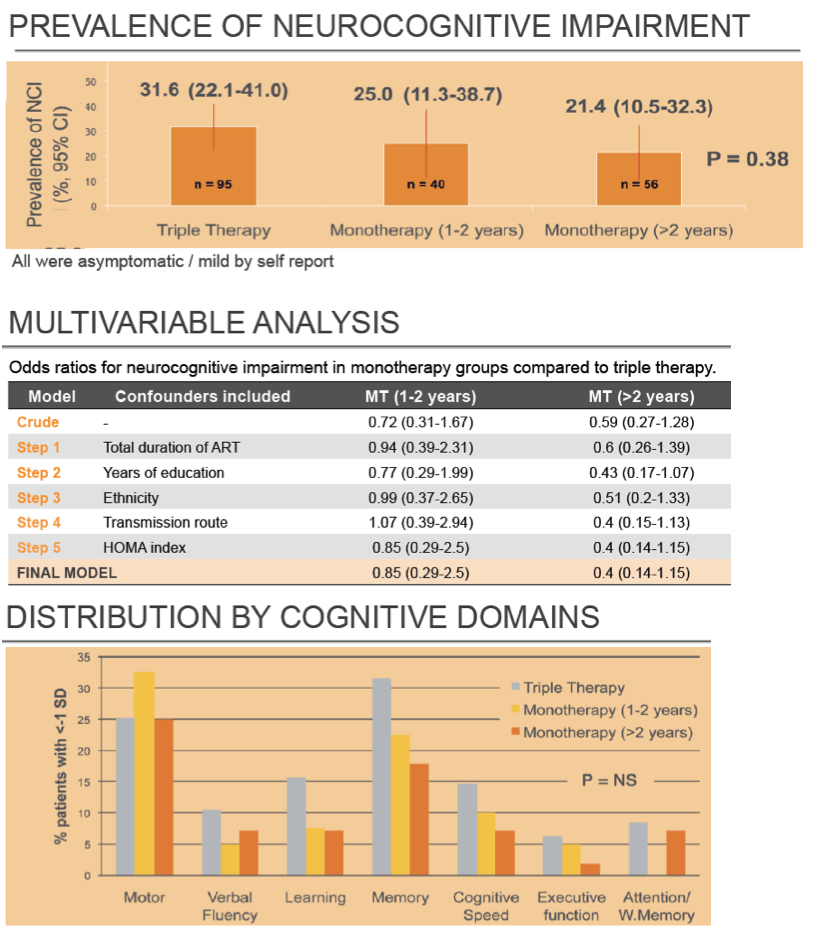
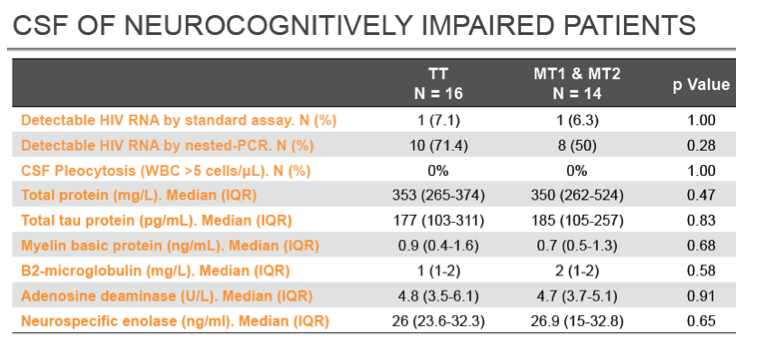
|
| |
|
 |
 |
|
|